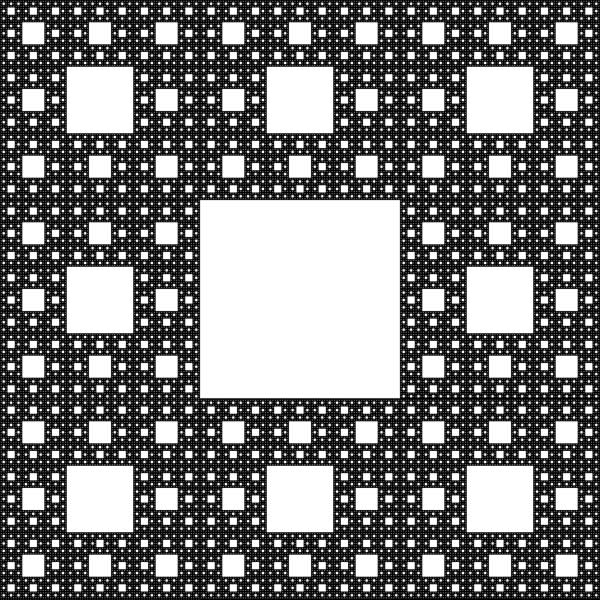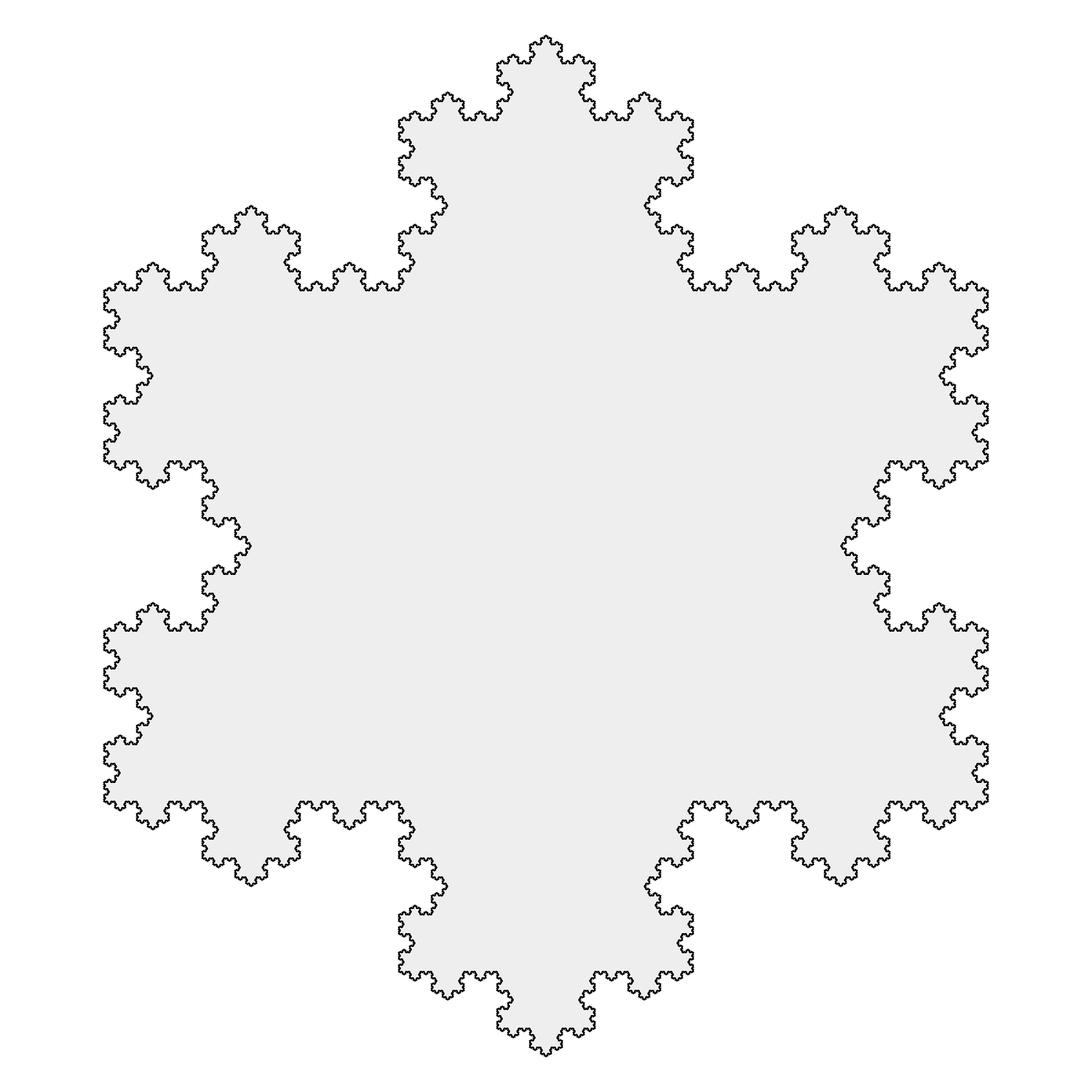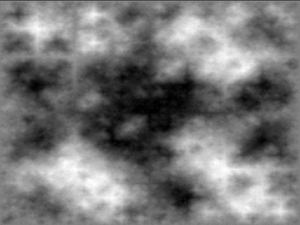Fractals
Fractal #
naming: fractional dimension
Definition: ##
self-similar $$\to$ when zoomed in, look the same
Types: ##
- Exactly self-similar
- Statistically self-similar
Exactly Self-similar ##
If zoomed in, there is no way to tell that we have zoomed in.
Sierpinski Carpet ###

- A square divided into 9 squares
- The center square is empty
- Each other square is divided again
Koch Snowflake ###

- Chop the lines into 3 Segments
- replace the middle one with equal lateral triangle
- Chop and replace each segment
The important property is that when we zoom in on an edge, it is arbitrarily “bumpy” - non-smooth. This is similar to things like shorelines. There is a self-similarity in natural shorelines.
However, shorelines are not as bumpy as Koch Snowflakes. They are smoother. Hence, we need a concept to describe the bumpiness.
Length of Koch Snowflake ###
Each Step increases the length to $$\dfrac{4}{3} \times$ original. Hence, Koch Snowflake is infinitely long.
$$l_k = \dfrac{4}{3} l_{k-1}$
Question: How quickly does Koch Snowflake’s length converge to infinity?
Measuring Length of Fractal Line ###
Different measuring scales lead to different length.
From the starting point, jump a fixed distance, $$d_u$, and measure how many $d_u$ are there in the line.
Each different $$d_u$ results in a unique length, and as $d_u$ approaches 0, the length measured approaches $\infty$
The scale is related to length and this function describes the bumpiness of a fractal line. This is called Fractal Dimension.
- Higher Fractal Dimension means more bumpiness
- Lower Fractal Dimension means less bumpiness
Shoreline/Mountain Topology ###
Use fractal dimension to model a bumpy line, and computationally derive the line, rather than describing more details.
Statistically Self-similar ##
Recursive Tree: Tree := Stick + Tree + Tree
Moreover, we need to take care of the angles, length and returning position.
It becomes:
- Stick
- Turn
- Tree -> this will expand to the same routine
- Turn
- Tree -> this will expand to the same routine
- Turn
- BackwardsL-System ###
The above process can be described by CFG:
$$T:S\leftarrow T \rightarrow \rightarrow T \leftarrow \overline{S}$
This use of CFG is called L-System.
Improvement to L-System Tree ###
- Randomness : This introduces Statistically similar fractal image.
The sub-parts are statistically similar to the original image, but not exactly the same.
To create a nice tree, it is important to examine each tree. There is a grammar to each type of tree, describing its patterns.
However, sadly trees don’t grow by the fractal model.
Incorporating Randomness Into Fractals ##
Example Algorithm (Subdivide and Offset)
repeat
foreach segment
offset midpoint for random distance
hence create two segments- deeper repetition: bumpier
More sophisticated examples:
Height Map ###
A raster vector of height
- Can represent any terrain with no overlapping height (not bumpy topology, water, etc.)
- Cannot represent extremely rocky terrain
Diamond Square

- Level 0: Four corners set to $$h = 0$
- Level 1: Mid-point $$m_1$ set to $h_1 += random$
- Level 2: Point on Edges aligned with $$m_1$, offset randomly
- Level 3: Mid-point of each sub-square, offset randomly
- …
The result could look something like:

The problem is the grid pattern is visible. There are ‘+’ in the graph, so rotating the graph will be noticed (not entirely natural)
Solution: Use
Applications:
-
NOT good for terrain. Natural terrain has very few local minima. The minima will drain, and become global minima. This is not reflected by diamond square subdivision.
-
Clouds. Clouds density is similar to the patterns generated from diamond square subdivision.
-
Dirt. This could create “dirty” texture to human-created objects.
Perlin Fractal ###
A perlin fractal is created by taking in a height map, downsize it, and fill itself with the small height map.